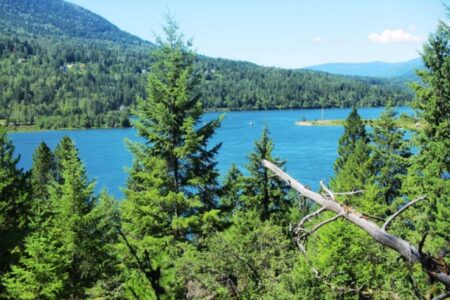LETTER: Gilpin grasslands need protection not for quad use
It was upsetting to read the current description of the Gilpin Grasslands as a recreation area by the Grand Forks Quad Bike Club.
Gilpin is an extremely important wildlife ecosystem, a point validated by three provincial governments and two land conservancies, all who have left an important footprint on Gilpin.
The grassland ecosystem in our province is advertised as the most threatened and less than one per cent of our land base and home to most of our threatened and endangered species.
Grand Forks is located in an east/west valley which is not that common in a province where our mountain ranges run north/south. This characteristic has resulted in a significant geographical area of south facing moderate to steep grassland slopes all critical to a long list of animals large and small.
The Boundary deer herd, the largest in our province for decades is in a death spiral. A Freedom of Information letter dated May, 1986 states that Fish & Wildlife staff counted 962 deer and believed for every deer counted they missed one therefore they believed there were 1100 whitetail and 900 mule deer. Today the spring deer count is under 200.
One of the major reasons for the collapse is the lack of meaningful access management. The Draft Management Plan July 2008 for the Proposed Gilpin Morrissey Wildlife Management Area states on page 61 there are approximately 62 km of roads throughout the WMA plan area. I believe there is approximately 81 km of roads, a conclusion made by listing 22 roads and calculating their length.
The importance of access management is well described on page 95 of the 2013 Washington State Hunting Regulations. The following quotes describe why motorized vehicles must be restricted in critical wildlife areas:
“Studies in the Pacific Northwest have shown that most big game animals avoid active roads by at least a quarter mile and some move as far as four miles to escape traffic.”
“For each mile of road at least four acres are directly removed as productive habitat.”
“Animals need energy to survive. Energy spent moving away from disturbances can deplete the energy needed to survive to late spring or give birth to a healthy elk calf. By limiting disturbances, road closures can enhance the health reproduction and number of animals in an area.”
“Roads have been closed to vehicular traffic in over 65 areas, providing over a million acres of relatively undisturbed prime hunting habitat.”
The first access initiative in the Grand Forks area was on Gilpin in 1978 as a result of the Boothman Ranch purchase in Aug. 1972 and an agreement made by the bureaucrats in Oct. 1972 that the number one management objective was wildlife.
A letter dated Jan 10, 1978 and signed by biologist Rod Silver was sent to the Overton-Moody Resource Management Plan Access Committee (Gilpin Grasslands). The biologist states that “the Overton-Moody Unit is recognized as one of the most important ungulate ranges in the Boundary and road access in the planned area should not be increased.”
“Hydro must be advised of this conclusion and the construction of the transmission line must be designed accordingly. More restrictive options such as road closures may be required if a proliferation of access results from the transmission line construction.” (The steel power line is the northern boundary of the Gilpin Wildlife Management Area Proposal).
The 1978 access initiative failed and as a result the Ministry of Environment tried once again in 1998. In a letter dated Dec. 18, 1998 Les Molnar, District Habitat Officer states “that it is our ministry’s position that unregulated use of motor vehicles within this area is a threat to habitat and species of concern. The spread of noxious weeds and direct loss of habitat (myriads of trails, ruts and non-status roads) over many years has created a degraded environment for wildlife”.
Once again this initiative failed because it relied on the responsible behavior of stakeholders and it is a reminder that it is long overdue for our politicians and bureaucrats to legislate rules and regulations that ensure our wildlife resource can compete with the endless greed of humans.
Barry Brandow



























Comments